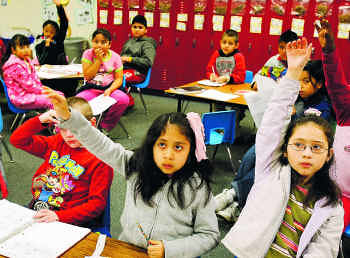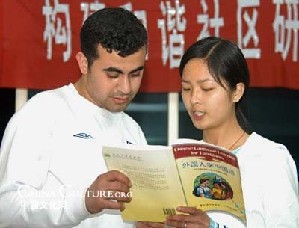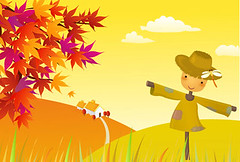China Say no to Pay for the Bronze Sculptures
A Chinese man says he was the successful bidder for two bronze sculptures auctioned in Paris last week. And he says he has no intention of paying. Cai Mingchao is a collection advisor for the National Treasures Fund. He successfully registered as an individual bidder on the day of the auction and bid 31.49 million euros by telephone. Cai say he will not pay for the
Onegin staged in Beijing
Dancers perform on the stage Chorographer John Cranko's (1927-73) magnificent Onegin is one of the most ravishing narrative works in the history of ballet. He created it for Stuttgart Ballet in 1965 and it has become the famous company's trademark repertoire. Stuttgart Ballet first toured China in 1980 and its performance of
Introduction to Suzhou Embroidery
Suzhou embroidery-one of China's four famous embrodiery styles, has a long history. It has been excavated in Auspicious Tower and Mount Tiger Tower made in Northern Song in the Five dynasties. Chinese embroidery was made in rather professional ways. It is recorded that Suzhou embroidery was very prosperous and the art reached perfection after Song dynasty. Each family bred silkworms, made
Local Styles of Paper-cuts in China
Daisy Though making of paper-cut is simple, its content is rich and reveals many local Chinese customs. Patterns of moppets, gourd vessels and lotus flowers symbolize numerous offspring; festival and peaceful patterns can help avoid evil spirits; patterns of domestic birds, livestock, fruits, fish and worms are closely linked with people's lives. Moreover, Chinese paper-cuts
Origin and Development of Paper-cuts
Chinese paper-cuts As one of the most popular folk arts in China, paper-cuts were originally used in making sacrifices to ancestors or as the molds for embroidery. Later, paper-cuts were mostly used as decorations on walls, doors, windows, house. Some paper-cuts were even presented to others as gifts directly. Paper-cutting boasts a long history in the countryside of
History and Classification of Ancient Chinese Musical Instruments
Erhu One of the most important aspects of Chinese culture is its music. Ancient Chinese music made its presence as early as 256 BC with the emergence of the Zhou Dynasty. Ancient Chinese musical instrument can be broadly classified according to the manufactured materials like wood, stone, hide, silk, bamboo, gourd, clay, and metal. Ancient Chinese musical instruments can also
Problem and Future of Chinese Calligraphy
As the practical value of calligraphy decreases, the art form suffers from the impact of Western culture. The spirit of the traditional art is increasingly ignored, driven by the quest for fame and fortune. The work deviated from the Chinese characters and the basic requirement of calligraphy. Impulsive creativity ran wild. This leaves us with the current problem of how to uphold the best of
Xukou-Famous for Calligraphy and Painting
Xukou is a small town beside the Taihu Lake. On August 6, 1991, the Ministry of Culture of the People's Republic of China formally nominated Xukou Township in Jiangsu Province as a "Kingdom of Chinese Calligraphy and Paintings." Of the total population of about 20,000, more than 2,000 farmers have become painters, and their works are popular in Japan and the US. The annual sales value of their
Chinese Calligraphy-an Amazing Oriental Art
Chinese calligraphy Chinese calligraphy is an Oriental art. It is like painting. It uses Chinese characters to communicate the spiritual world of the artist. One thousand persons may have as many differences in handwriting. Through the form, way of handling the brush, presentation, and style, calligraphy conveys the moral integrity, character, emotions and esthetic feelings to
Spring Festival Handicrafts
“Fu? “Fu? pronounced as “Foo?is certainly a lucky word for Chinese. It means fortune, luck, blessings and happiness. The tradition of pasting the character “Fu?on walls, doors and doorposts especially during Chinese New Year has existed among Chinese for such a long time. Chinese like to paste the “Fu?character calligraphed on red paper upside down intentionally. It is
Total: 159 Items This is 2 Page( 10 Items/Page) Result Page: 16 Pages First Previous Next LastArt
 more
moreU.S. space shuttle Discovery lifts
The space shuttle Discovery takes off from launch pad

Obama administration vows to break

Irving dual-language students
Melissa Reyna (center) and Johanna Sanchez

Dev, Denny to quizz for charity
Director Danny Boyle (R) holds his Oscar for

Custom
 more
moreProvinces Site
Chinese Medicine
 more
more









